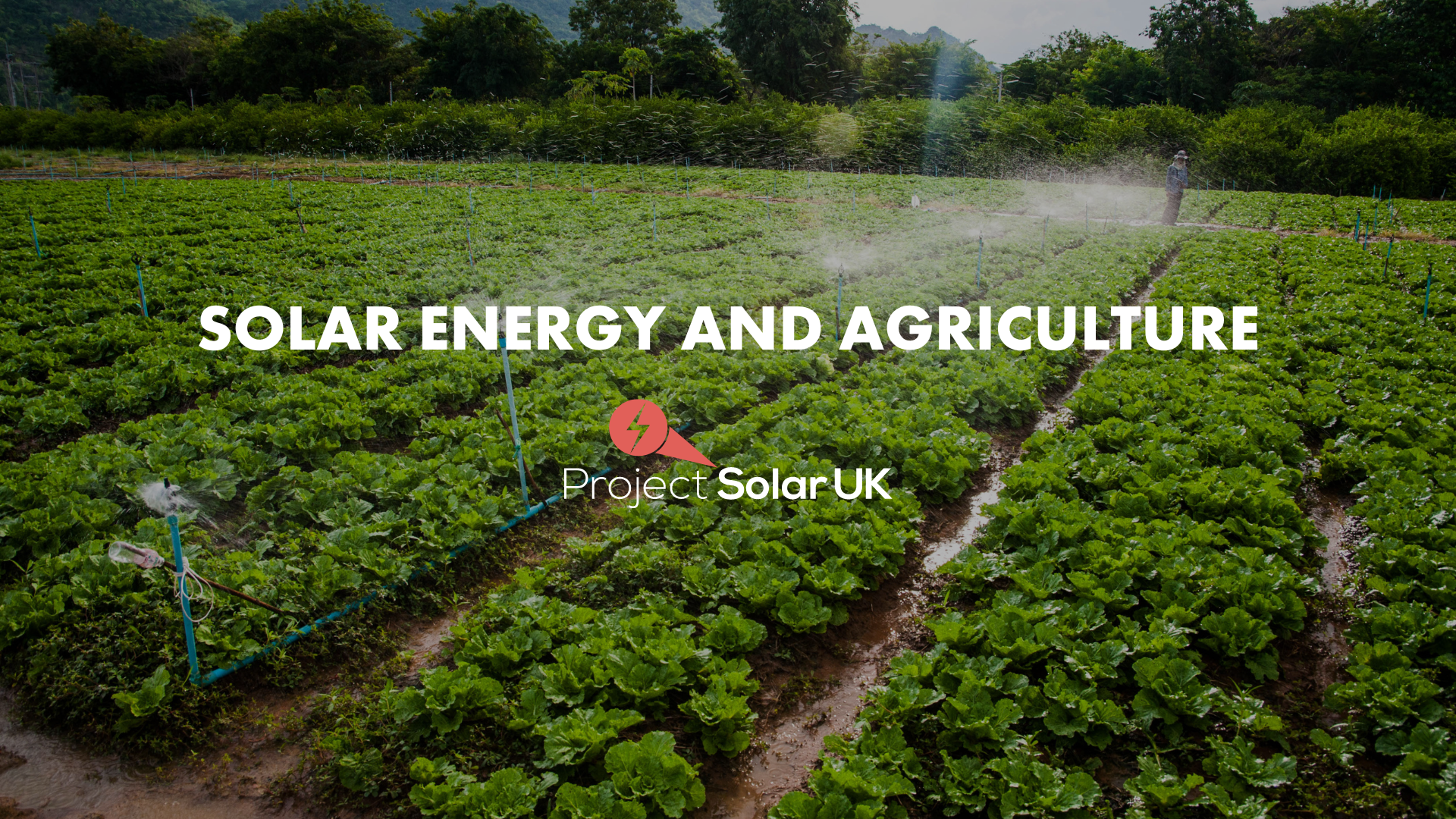
Solar Energy and Agriculture: The Rise of Agrivoltaics
The summer of 2023 roasted the nation, with the Office for National Statistics reporting June as the hottest month in the UK since records began in 1884.
Over three months later, in September 2023, the UK trudged through the hottest day of the year when temperatures climbed to 32.7°C! While these statistics may make sun worshippers happy, they’re a stark reminder of climate change.
Rising global temperatures are a constant cause for concern. As we continue generating power from unsustainable sources, our environment changes: ice caps shrink, droughts increase, and the growth of vital crops is stunted.
Although it’s true that the agricultural sector heavily relies on electricity for crop farming, new PV technologies are emerging to increase sustainability.
What is agrivoltaic energy?
Agrivoltaic energy, sometimes called ‘agrophotovoltaics’, is an innovative approach to land use that combines traditional agriculture with solar photovoltaic (PV) energy generation.
Solar panels harness sunlight to produce agrivoltaic energy, while the gaps between these panels (or their elevated structures) allow sunlight to reach the crops below.
Although agrivoltaics seems relatively modern, the concept was first conceived by German physicists Adolf Goetzberger and Armin Zastrow in 1981. Over 40 years later, their idea has become a reality in countries like Japan, South Korea, China and France.
How does agrivolactics work?
Typically, PV panels are installed on top of a fixed support system elevated above the crops (the system’s height will depend on the crop growth). This elevation means farming machinery can still be operated underneath if necessary.
Another approach involves dynamic agrivoltaics, where panels are placed on elevated cables. These systems can be adjusted as the season progresses or as new plots of land are cultivated.
The needs of plants and crops are naturally complex, which is why some systems involve complex monitoring. To prevent them from casting a constant shade on crops, the panels will change positions throughout the day, orienting to maximise their solar efficiency.
How can agrivoltaic solar panels be used?
The chief purpose of agrivoltaic solar panels is electricity production.
In 2021 alone, the agricultural sector was by far the most emission-intensive industry, and as the second largest generator of greenhouse gas emissions, it’s clear why researchers are working on a more long-term energy solution.
Alongside electricity generation, agrivoltaic panels allow for the simultaneous cultivation of crops like fruits, vegetables, and grains. The panel’s large surface area can protect the crops from sunlight levels that may be too intense, as well as other environmental elements.
Or, if the ground beneath the solar installation is unsuitable for crop growth, solar installations can serve as grazing areas for livestock to ensure the land remains productive.
In coastal environments, agrivoltaics takes on a more multifaceted role. The solar panels produce electricity, which in turn powers desalination plants. The freshwater generated from these plants supports crop growth and could potentially be used for drinking!
Where are agrivoltaic solar panels already used?
The rollout of agri-systems is happening across the world.
The Fraunhofer Institute for Solar Energy Systems (ISE) in Germany has been at the forefront of agrivoltaic technology. Through intensive research and practical applications, they’ve shown how agri-systems could be a viable solution to sustainable energy production.
Similar projects have taken place in France, with solar tech companies spearheading solar panels to help grow fruit trees, vegetables and vines.
Researchers in the UK are drawing up their own design plans, with the University of Greenwich exploring whether agrivoltaic materials can be retrofitted to existing greenhouses or polytunnels to help UK-protected agriculture meet net zero-carbon targets.
What are the benefits of agrivoltaic energy?
So, how exactly could agri-systems benefit the agriculture sector?
1.Possibility of reduced water consumption
Agrivoltaic systems could lead to better water conservation and improved growing conditions for crops.
The shade provided by the solar panels can potentially reduce evaporation, a factor that’s especially important for drought-prone regions. The panels could further conserve water by reducing the need for irrigation.
2. Possibility of increased productivity
The dual-use of land for both energy and agriculture means that areas may be used more productively. Agrivoltaic PV systems could provide farmers with a stable and potentially increased income flow from energy generation and crop production.
3. Better yield for certain crops
Specific crops may benefit from the shade provided by solar panels.
In Northern Europe, crops like onions, grains, potatoes, strawberries, and raspberries might find agrivoltaic conditions favourable. Partial shade can lead to higher crop production for vines or olive bushes in more sun-intense regions.
Researchers in South Korea even found that broccoli grown under photovoltaic panels was of similar quality to traditionally grown broccoli and even had a deeper green colour (which may be more appetising to potential customers!)
The Future of Renewable Energy
At Project Solar, we’re always keeping up to date with the latest developments in photovoltaic technology.
As solar panel technology is always evolving, we’re here to provide our customers with the market’s most up-to-date products. There’s never been a better time to invest in a top-quality solar panel system, and we can help you get started.
Contact us if you want to know how to make your home or business a more eco-conscious place



